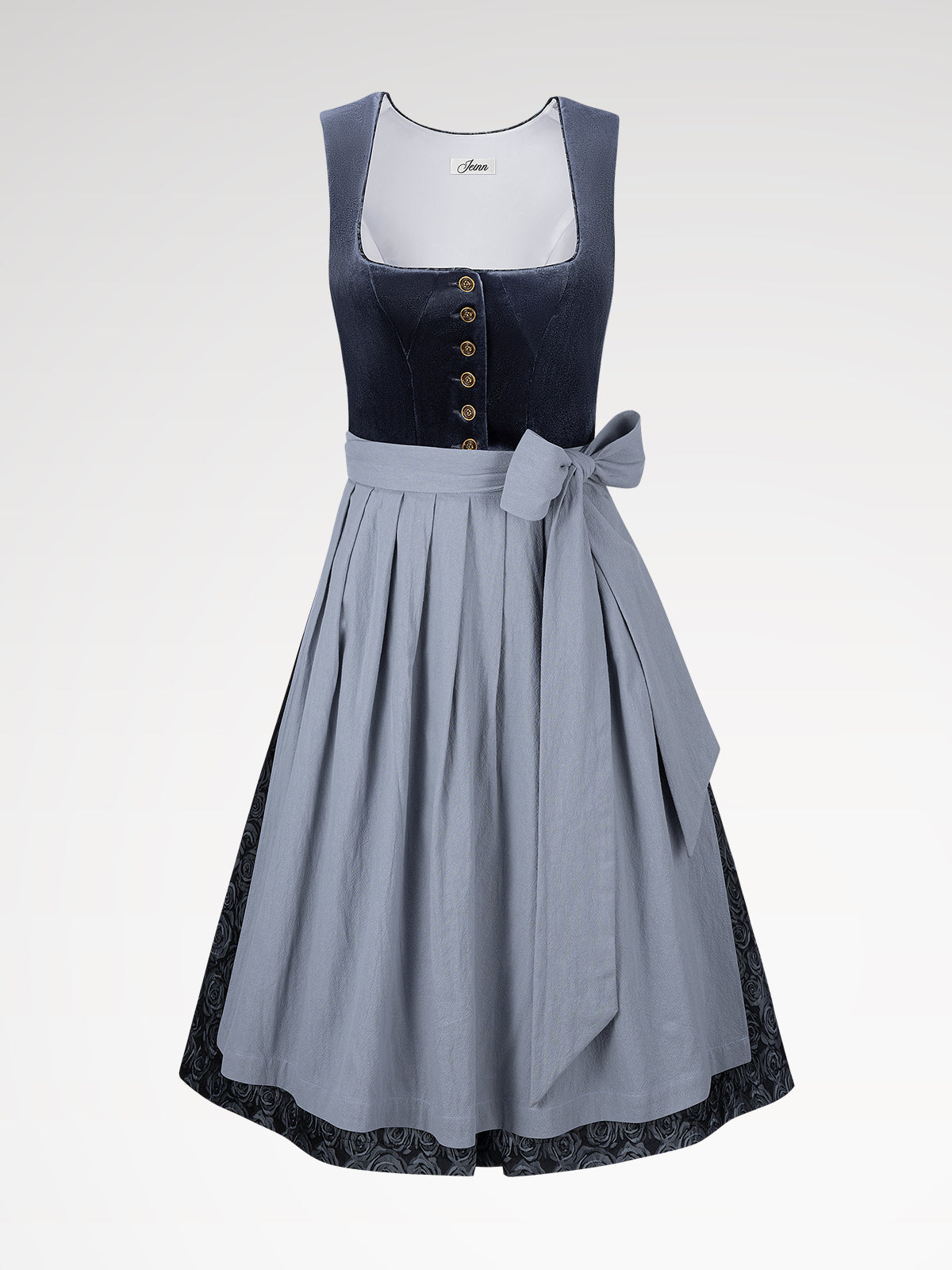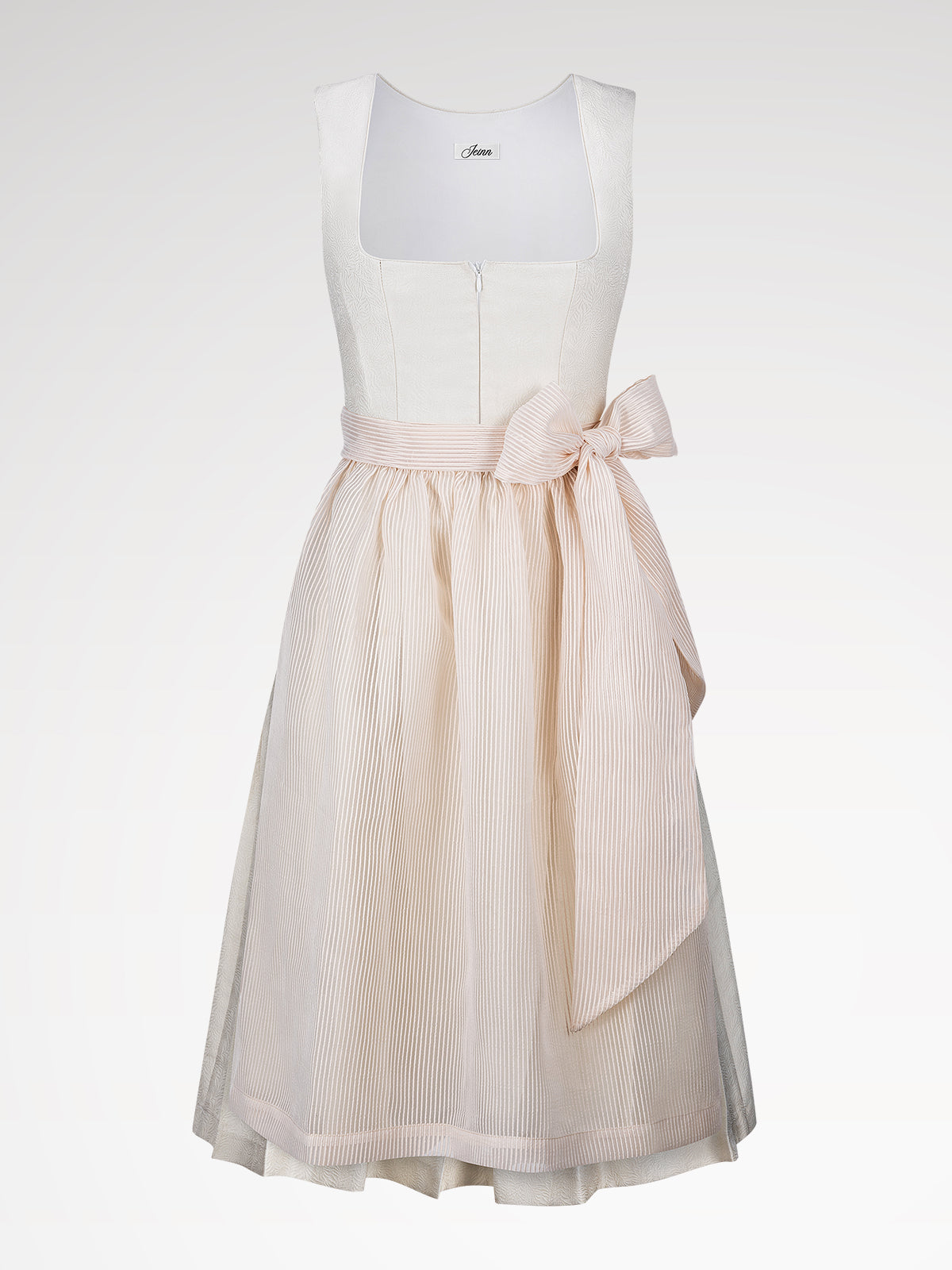Introduction: A dress between alpine meadow and catwalk
The dirndl, once the simple workwear of Alpine peasants, underwent a fascinating evolution from a symbol of rural poverty to a global fashion statement. Its history reflects political upheaval, cultural appropriation, and creative rebellion—a fabric woven from tradition and innovation.
Origins in the 17th century: function over form
In the 17th century, the dirndl served as practical workwear:
- material && Cut: Robust linen, a loose skirt and a simple bodice allowed freedom of movement when working in the fields.
- Color palette: Natural tones dominated; blue was created using plant-based dyes such as woad, but a dark blue dirndl remained rare—too elaborate for everyday wear.
- Regional codes: The apron buckle signaled marital status – a detail that was later romanticized.
19th century: aristocratic appropriation and Rococo influence
With the "summer holiday" movement, the nobility discovered the dirndl as an exotic accessory:
- A stylistic revolution: Tightly laced bodices (inspired by Rococo silhouettes), silk ribbons, and voluminous skirts transformed workwear into a status symbol. An elegant blue dirndl with silver embroidery became a must-have at Viennese salons.
- Color symbolism: Dark blue dirndl now represented bourgeois prosperity, combined with alpine dirndl effects through silk yarn.
Example: Empress Sisi wore custom-made dirndls made of turquoise blue velvet – an early triumph of the elegant blue dirndl.
Dark Chapter: Nazi Instrumentalization
The Nazis perverted the dirndl into a political uniform:
- Regulation: Fabrics, colors, and decorations were standardized. A simple dark blue cotton dirndl served as the BDM's "service uniform"—individual expression was discouraged.
- Ideological charge: The dress now embodied "natural femininity" and peasant "purity." The apron was engaged, the hair braided—a staged idyll.
Post-war renaissance: From trauma to symbol of tradition
From the 1950s onwards, the dirndl freed itself from the political burden:
- Oktoberfest as a catalyst: High-quality dark blue dirndls made of cotton velvet with floral borders became the epitome of Bavarian festival culture. The fabric reflected the light like alpine shine dirndl-effects.
- Designer pioneers: Leni Riefenstahl staged dirndls in films as symbols of innocent beauty – a conscious distancing from the war period.
Haute Couture: Prada's Dirndl Deconstruction
Miuccia Prada’s Spring/Summer 2019 collection marked a global breakthrough:
- Silhouette experiments: She deconstructed the bodice into elegant, asymmetrical velvet jackets in dirndl blue, while skirts were reinterpreted as geometric sculptures.
- Material contrasts: traditional cotton velvet meets technical nylon – a play on history and futurism. The dark blue dirndl became an abstract homage.
Quote Prada"The dirndl is not folklore, but a grammar – its elements allow for endless combinations."
The modern dirndl: cultural heritage meets avant-garde
Today the dirndl exists in parallel realities:
- Tradition obliges: At the Munich Oktoberfest, the dark blue velvet dirndl with delicate alpenglanz dirndl embroidery remains a classic.
- Streetwear revolution: labels like Diesel combine dirndl skirts with leather jackets; dirndl blue elegant-Inspirations appear in caps and sneaker designs.
- Sustainable innovation: Organic cotton and recycled silk continue the legacy of resource-saving origins.





Leave a comment
This site is protected by hCaptcha and the hCaptcha Privacy Policy and Terms of Service apply.